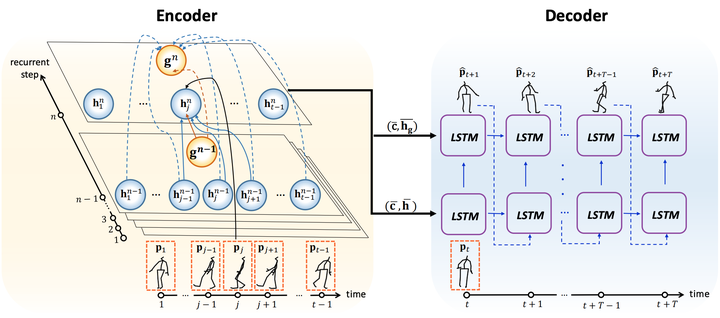
Abstract
Anticipating the future motions of 3D articulate objects is challenging due to its non-linear and highly stochastic nature. Current approaches typically represent the skeleton of an articulate object as a set of 3D joints, which unfortunately ignores the relationship between joints, and fails to encode fine-grained anatomical constraints. Moreover, conventional recurrent neural networks, such as LSTM and GRU, are employed to model motion contexts, which inherently have difficulties in capturing long-term dependencies. To address these problems, we propose to explicitly encode anatomical constraints by modeling their skeletons with a Lie algebra representation. Importantly, a hierarchical recurrent network structure is developed to simultaneously encodes local contexts of individual frames and global contexts of the sequence. We proceed to explore the applications of our approach to several distinct quantities including human, fish, and mouse. Extensive experiments show that our approach achieves more natural and accurate predictions over state-of-the-art methods.